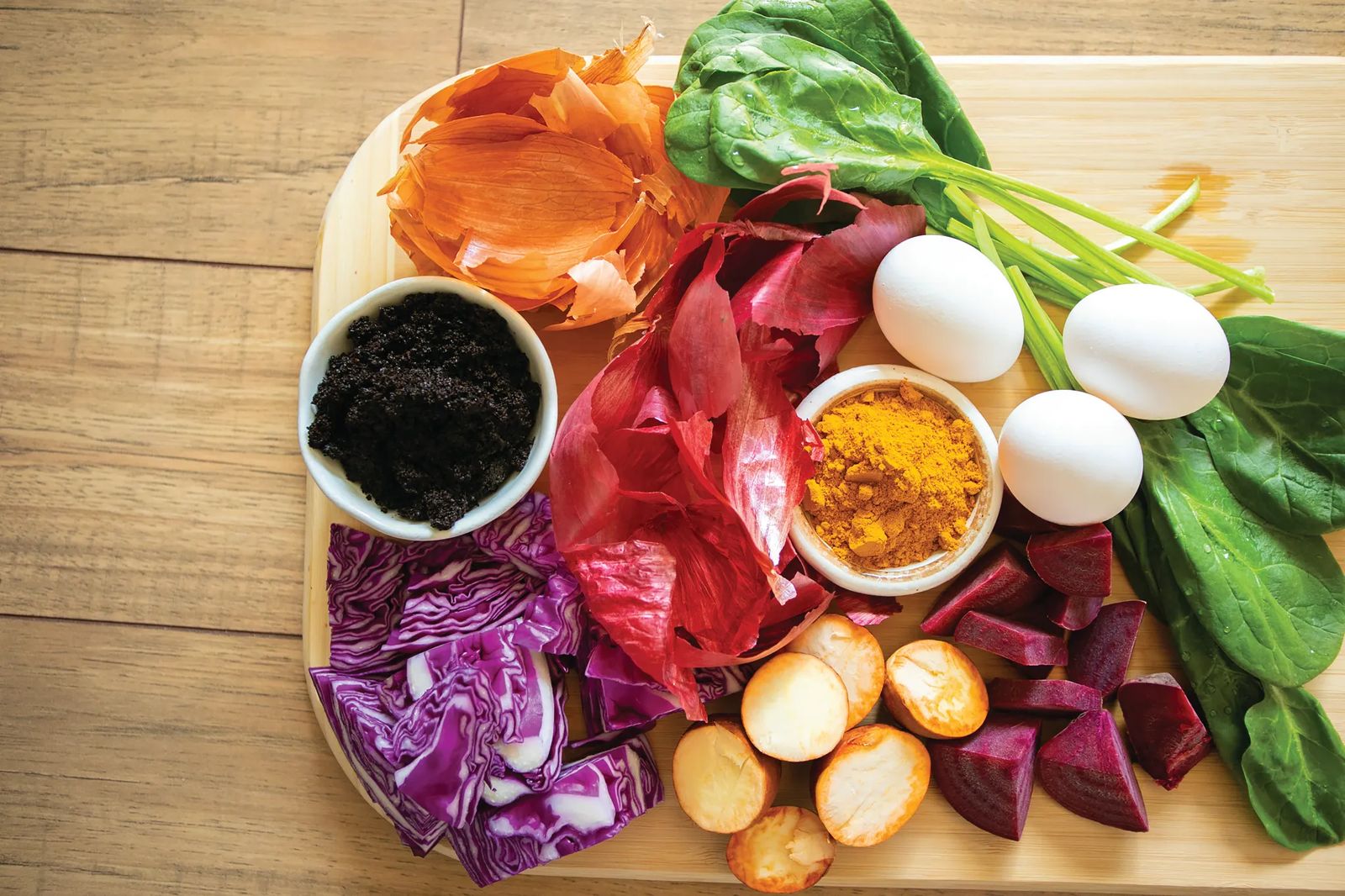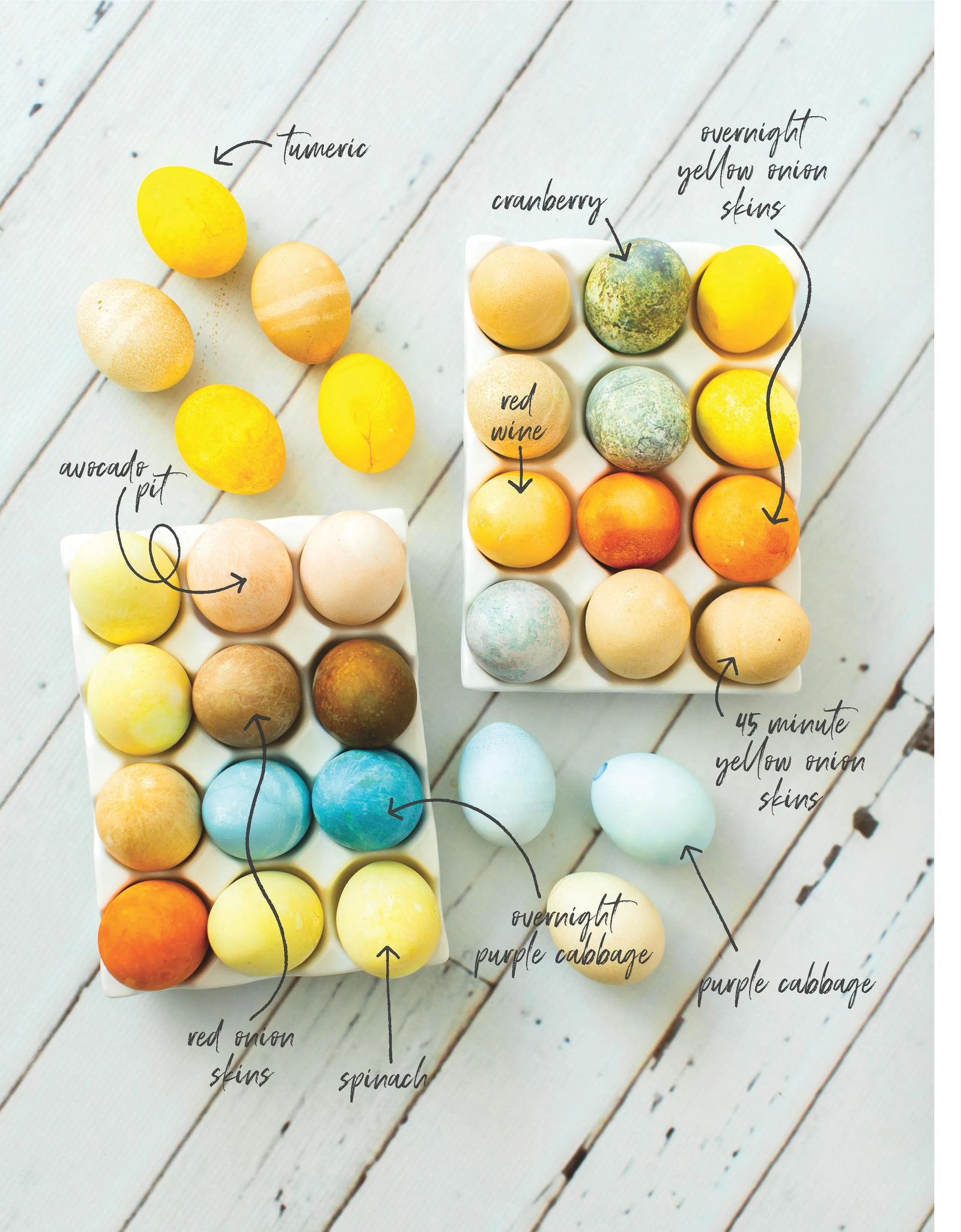
How to Naturally Dye Easter Eggs
April 1, 2020 | article & photos by lovely hitchcock
Who doesn’t love spring? While I was teaching English in Japan, my students asked what Americans do when spring has sprung. “We hunt for colorful eggs and buy new clothes!” I joyfully exclaimed. Of course, then I had to explain how we use dye tablets to color the eggs, and how this is “food safe”...I think. Looking back, I wish I had known about natural dye when I had explained Easter to them. I could have told them how to color their eggs in a more enjoyable, safer way that doesn’t require chemicals.
When my children were young, tablet-dyed egg coloring was the highlight of springtime. Never one to throw away food, I would eat the cracked eggs rather than use them in a salad or other dish. I knew the dyes weren't "poisonous," but how would those chemicals react with other foods? I began to search for a safer, less "chemical" alternative to egg dyeing.
When I first heard about naturally dyed Easter eggs, I assumed it would be an expensive project. Nonetheless, I took to the store and started picking up yellow and red onions for my healthy Easter project. As I did so, I realized that there were plenty of onion skins just lying about the bottom of the bins. I daringly approached the produce manager and asked if I could buy those scraps. The manager was a bit confused but quite generous, so I walked out of that store with a free bag of dye...or rubbish, depending on one's perspective.
A Fresh Perspective
Once home, I began looking at food differently. We consume an inordinate amount of avocados in our household, so I scavenged the promisingly dark green peel and a pit from one. A focused scouting mission discovered a cornucopia of colorful candidates in my kitchen: frozen cranberries, coffee grounds, red wine, those dying Gerbera daisies on the table, green tea, cucumber and carrot peels, beets, and that spinach I honestly intended to eat.
After some experimenting and a lot of tweaking, I discovered the alchemy (some would say “science”) of natural dyes. There are even more wonderful foods that make excellent natural dyes, like red cabbage and turmeric. The list grows larger every time I go to the grocery store.
Preparing the Dye
Preparing each dye is quite easy:
- Start with 2 cups of water, combine it with a single ingredient, then bring it to a boil and simmer for 30 minutes.
- Transfer the concoction to a jar and let it cool to room temperature.
- Add one to three eggs and let sit for forty-five minutes to overnight.
Food for thought: Different soak times will render different colors and designs. A teaspoon of white vinegar creates better color adherence but washes out the greens.
Every egg will come out differently, which is like opening a Christmas gift on Easter! This is a fun, completely safe, chemical-free activity you can share with your children or with a glass of wine and a good playlist. So go nuts! (Oh! I haven’t tried those yet).

Originally printed in the April 2020 issue of Simply Local Magazine
Never miss an issue, check out SLM's digital editions here!





